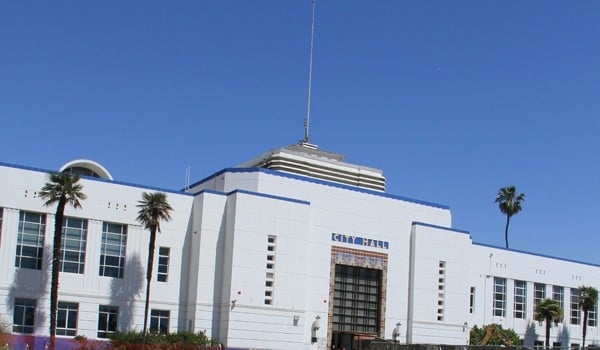Students and teachers who use the Expo Line to commute to Santa Monica College will likely love the planned changes heading to 17th Street as the City looks to add a protected bike lane, more lighting, curb extensions and other improvements for carless commuters. The only problem - many students will have already received their diplomas by the time construction on the project ends. City staff anticipates finishing the project by fall of 2021.
“Why does it take so long to do something that’s so on message?” Planning Commissioner Richard McKinnon asked at a recent meeting where city staff unveiled the plans. City leadership has signed onto Vision Zero, a commitment to eliminating traffic fatalities. Eight pedestrians and one cyclist were killed by cars in Santa Monica last year. “In a city where people are being killed and people are being injured on the street and people are afraid to walk or ride a bike because of safety issues...it’s just wrong.”
Mobility Director Francie Stefan said the strings attached to Federal funding to help pay for the $7 million streetscape project meant an extra year of planning.
“We’d like to see it happen overnight as well,” Stefan said.
The number of people walking the path between the train stop and the college has skyrocketed by 1600 percent since the Expo Line opened in 2016, according to a city report. Biking along 17th Street is up 82 percent. During the same time frame, the number of cars on the street increased 20 percent.
In response to the change in traffic patterns, a 1.1 mile stretch of 17th Street between Wilshire Boulevard and Pico Boulevard will have Santa Monica’s first protected bike lane, connecting the rail stop, Memorial Park, and the college. The bike lane will be placed between the sidewalk and parking spaces with a raised median separating cyclists from vehicles. The changes mean the corridor will lose about 94 parking spaces.
The improvements will also protect Bird riders, who are prohibited from zipping along sidewalks by the California Vehicle Code. At least two Bird riders have been involved in serious crashes involving cars since the service launched in Santa Monica late last year.
“These are streets that are comfortable for drivers, bikers, pedestrians, Bird riders and whatever people choose,” said Bird’s Director of Government Affairs Carl Hanson, who spoke at the meeting.
Michigan Avenue will also receive improvements under the plan, including curb extensions to shorten the distance pedestrians have to cross the street, better lighting, and small traffic circles to slow the speed of drivers.
Commissioner Mario Fonda-Bernardi applauded the plans for striking the right balance between the needs of drivers and other commuters. The plan includes so-called Dutch intersections that are designed help bicyclists make left turns without needing to weave between cars
“This is the most exciting thing to happen to Santa Monica transportation since the train, hands down. I’ve think you’ve actually nailed it perfectly,” Fonda-Bernardi said.
The plan heads to the City Council next. The city will submit a Request For Proposal for the final design in early 2019.
kate@www.smdp.com









